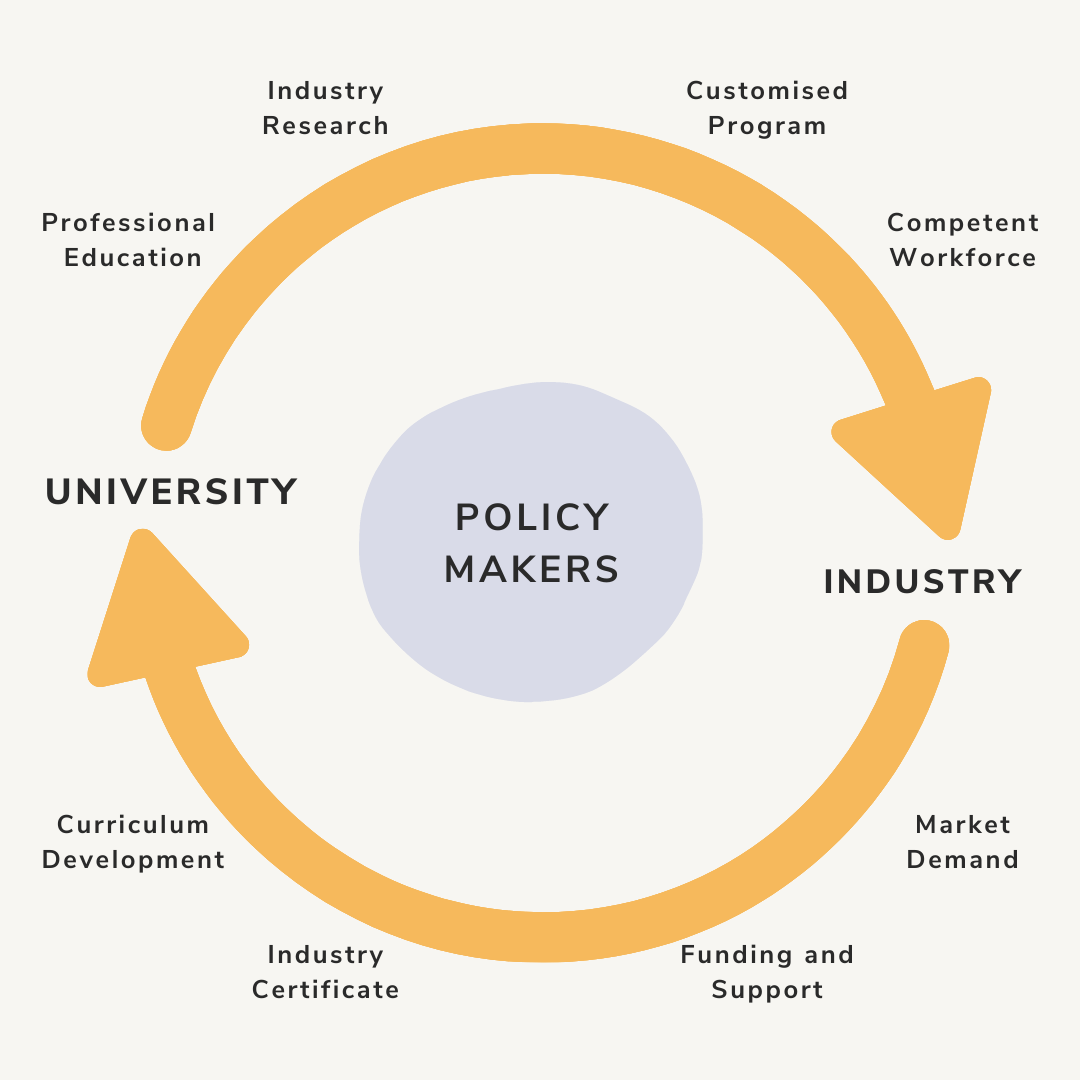
India’s education system was ranked 26th in the world in the QS Higher education System Strength Rankings 2018 especially for the well-known quality of its education in engineering and technology subjects.
According to industry estimates, 15 lakh engineers graduate in India every year but only 7% of them are actually employed.
Aren’t both statements a bit contradicting?
India is just a factory churning(read manufacturing) out engineers and not getting them employed. This brings us to a question:
Why out of so many graduates only a handful of people are getting employed?
And the answer to this is the Huge gap between the Industry and Academia.
It’s the gap between the education system and the industry expectations & requirements. And this is not just restricted to engineers but is common in the whole education system.
When we talk about unemployment, the main reason is the gap between the kind of skills & competencies the industry requires(read demand) and what is being taught(read supplied) by most of the educational institutions. So, there is definitely something that is lacking behind which is promoting this gap!

The educational institutions, as a result, end up imparting students with theoretical, and often outdated knowledge, which only provides us with a degree that serves the purpose of a widely recognised and demanded validation certificate serving as a pre-requisite for employment. Being devoid of relevant practical knowledge for the industry, students study with the intent of passing exams. Additionally, the lack of continuous assessment and an examination system designed around rote learning rather than the understanding of the subject and conceptual clarity aggravates the problem.
It is most often seen that students aren’t even aware of the applications of the topics they study. They are not even moulded or encouraged to think critically and develop real problem-solving skills. So, even when the students are imparted relevant knowledge, they lack practical teaching, interrelationships with other theoretical concepts and exposure to industrial case studies.
The aforementioned problems highlight another burgeoning problem – When the students don’t even know where to apply the knowledge they are gaining, how are they supposed to develop into valuable human capital?
Another indispensable industry requirement from freshers is soft skills- reasoning, analytical thinking, complex problem solving, active learning, and critical reasoning. As mentioned earlier, this is not something that is catered by the educational institutions, widening the supply-demand gap. The employers have consequently lowered their hiring standards in order to be fully staffed and are also conducting training programs to upskill their resources. However, this exercise is only undertaken by large enterprises with the resources to conduct such an activity. The remaining suffer due to lack of competence and thus have an ultimate bearing on their performance. This is critical in a world where economies are more integrated than ever and the need to upskill is the only way to remain in business.

Thankfully, the picture isn’t all gloomy and the government has taken note:
The New Education Policy is a big effort to reduce the gap between academia and the industry. It has introduced concepts of critical & analytical thinking and coding skills are to be inculcated in the school going students.
Also, an initiative like Atal Innovation Mission, Start-up India and Skill India, which focus on teaching new-age skills to students and job seekers can be a part of the solution.
The need of the hour is to align the academic curriculum with industry requirements. Moving from a theoretical approach to a more practical and skill-focused one will go a long way in ensuring the holistic development of human capital.
Well-deliberated exposure to the industries in the form of internships, live projects and corporate interactions can help equip the students to adjust to the needs of the industry. Simultaneously, it is also imperative to give trainers the industry exposure to be in line with the current industrial trends.
Effective collaboration between academy and industry has the potential of boosting our economy and transforming our country into a knowledge economy.
The symbiosis between industry and the education system will create a win-win situation that can be leveraged for achieving goals like making the agriculture sector more remunerative, developing the manufacturing sector, combating pollution, growing into a $5 trillion economy to name a few. This would go a long way to ultimately make India “atmanirbhar”.
Written by Riddhi Arora, Team edSlash.
Frequently Asked Questions
1. What is the gap between Academia and Industry?
The factors leading to the wide gap between academia and industry are the lack of interactions between the educational institutions and the industry professionals, the lack of practical knowledge exposure for students and the kind of teaching methodology being used in our educational institutions.
2. What qualities do you think a student needs to have to bridge the gap between university and industry?
Some indispensable industry requirements from freshers/students are soft skills- reasoning, analytical thinking, complex problem solving, active learning, and critical reasoning.
3. How does New Education Policy (NEP) focus on bridging the gap between industry and academia?
The NEP 2020 focuses on increasing the Gross Enrolment Ratio in higher education from 26.3% to 50% by 2035. It emphasizes providing a flexible curriculum through an interdisciplinary approach
4. What is the relationship between education and industry?
When industry and higher education institutions work hand in hand to reach new heights of knowledge, they become a powerful engine for innovation and economic growth.

